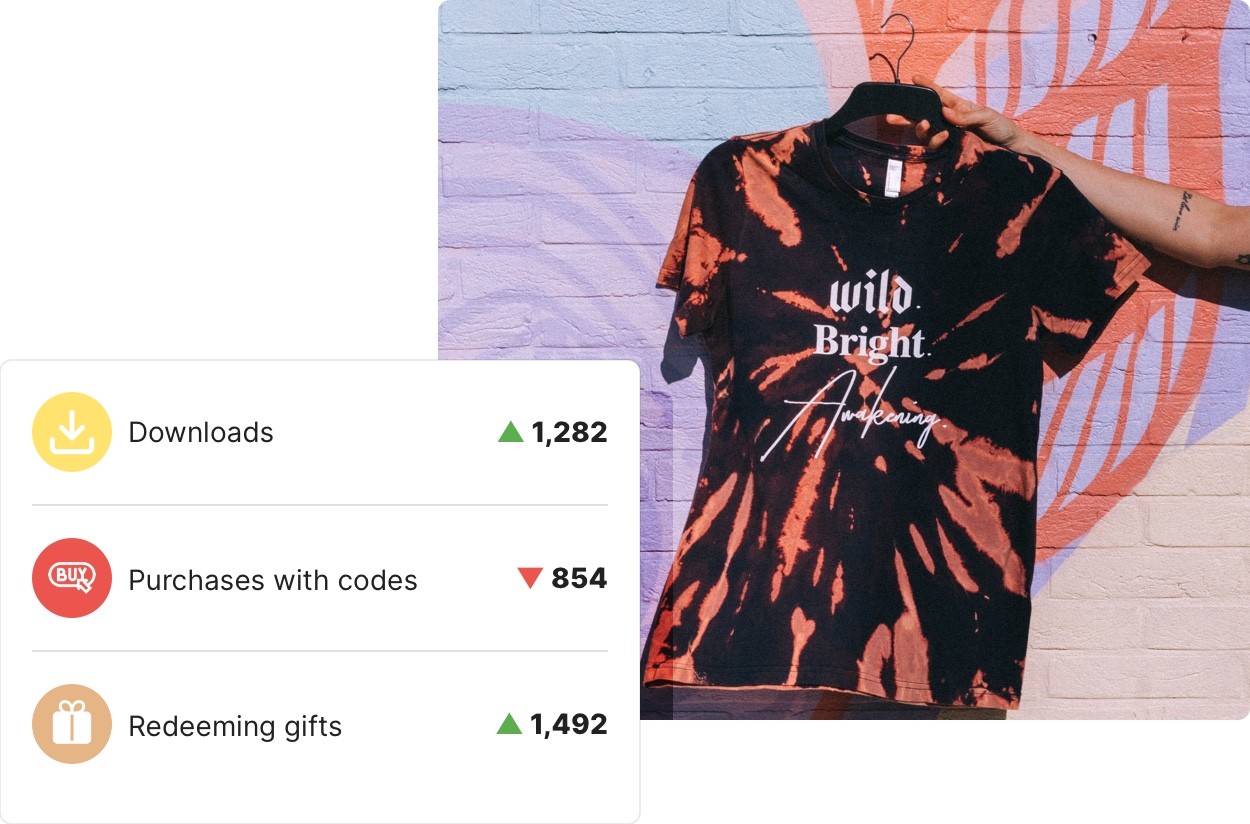How to Calculate the ROI of Influencer Marketing Campaigns
Best practices for how to calculate ROI for influencer marketing campaigns that actually contribute to your brand’s bottom line.
How to accurately measure influencer marketing ROI
There’s actually a way to measure influencer marketing campaigns AND ROI, without asking your influencers for screenshots and manually populating a semi-awesome and accurate spreadsheet.
The process for calculating ROI can be summarized into five key steps:
1. Set campaign goals
How can you measure progress if you don’t know where you’re going? How do you know that you’re a success, if you don’t define what success looks like?
An influencer campaign must have a goal before anything else. It determines where you’re going to go and how you’re going to get there. It helps influence the campaign creative, the influencer you work with, and even the timing of your campaign.
Your goal must be three things:
Achievable
Measurable
Relevant
For instance, you can’t simply say: “I want our brand to go viral across all audiences.” That isn’t realistic, because there’s no guarantee it will go viral. There’s no definition of what “viral” means, so you can’t tell if you have gone viral or not. Lastly, the goal of “being viral” doesn’t actually help the business in a substantial way, and isn’t relevant to growth.
A more reasonable goal would be something like: “Increase sales of X product by 150% this year."

You see how much of a difference that is? You’ve set a target figure of sales for a specific product, which is much easier to measure and relevant to the goals of the business. Now all you need to do is break that overarching goal down into smaller steps.
2. Define your metrics
If a goal is defined as what you’re trying to achieve, then your metrics are how you know whether or not you’re achieving it.
Metrics are everywhere these days: Google Analytics has them, and so do most influencer marketing platforms. Even the social media channels that influencers use have built-in metrics--albeit very basic ones.
So the challenge isn’t finding metrics to track; it’s defining the right metrics to track. While some metrics are generally more valuable - conversions, for instance - their relevance to your goals is what makes certain influencer marketing KPIs worth favoring over others.
Influencer marketing campaign metrics can be categorized into two different buckets:
Brand awareness
Direct response
Brand awareness metrics
Brand awareness KPIs help measure how recognizable your brand is to customers. I say “help,” because it’s difficult to quantify with absolute certainty. And so these measures can be seen as “signals” that help marketers infer how a brand is being perceived by the audience.
It’s important that marketers, managers, and business owners understand this distinction so that they have the proper expectations when working with influencers. Brand lift, brand perception, and brand sentiment can’t be measured to the decimal point, and there is no fixed ratio between the amount of dollars poured into a campaign and the amount of positive social sentiment that will come out of it.
That said, here are some of the most commonly-used brand awareness metrics.
Followers
Subscribers
Impressions
Likes
Shares
Comments/Replies
Mentions
There are other signs of brand awareness growth that aren’t measured by out-of-the-box social media metrics. These could include press coverage or being listed on a social media platform’s “Trending” section - not to mention word of mouth between friends or back-channel shares via Slack or IM/DM. All of these are hard to quantify and measure in a report, but can have a visible effect on your website traffic and general social media performance.

Direct response metrics
A direct response KPI is the exact opposite of a brand awareness KPI. Where brand awareness metrics infer a campaign’s business impact based on signals like shares and comments, direct response metrics confirm the business impact through direct links to conversions.
Let’s say an influencer posts a video of a product and invites followers to purchase using code BUYTHISNOW. The business now knows with certainty that anyone using that code did so because they were convinced by that influencer. That revenue is now directly attributable to that campaign.
Metrics that indicate direct response include:
Downloads
Signups
Purchases with codes
Redeeming gifts
These are far stronger performance indicators than brand awareness metrics, and should be used whenever possible.

3. Add up your costs
Influencer marketing might be cheaper than a traditional TV ad, but that doesn’t mean it’s free. These costs need to be tracked, recorded, and added up in order to gauge whether or not your influencer marketing campaign has been worth the investment.
Campaign costs can include:
Agency fees. An agency would be responsible for ideation, talent management, and campaign reporting at the very least, but may or may not cover production costs.
Talent fees. This is the cost of signing your influencer. It could be signed on a per-project basis or long-term contracts, but make sure you take the time scale of your partnership into account when calculating ROI.
Production costs. Photography/filming, wardrobe, and editing are just skimming the surface of production costs. You also have location fees and travel costs, as well as writing and even food (if applicable).
Product samples. Are you handing out samples to influencers? Don’t forget to account for those in your ledger!
Legal costs. Contracts often need to be reviewed by professionals. If you don’t have lawyers on staff, we suggest you engage one on a per-consultation basis.
Software costs. What video editing platform are you using? What marketing campaign management software? These are long-term purchases, but factor their usage into your cost calculations for clarity.
All these, plus the number of hours your team is putting into the campaign (if you want to count those). Quite an investment for a few seconds of exposure, isn’t it?
4. Calculate returns
Now comes the tough part: determining how much each online interaction means to you - in dollar amounts.
There are two ways of approaching calculating a return: the simple way, or the granular way.
The simple way involves simply totalling up whatever sales could reasonably be attributed to the campaign, and dividing that amount by your cost.
Let’s say you hire an influencer to promote your product for $2500, and that promotion generates $10,000 in sales. Your ROI formula would then look something like this:
$10,000 / $2500 x 100 = 400% ROI
This kind of calculation works best if you use direct response metrics that can be clearly associated with the campaign, such as promo codes or attribution links.
If you don’t use such KPIs, then your calculation process is going to be a little more involved.
Yet, the most common way to estimate performances is looking at how much each impression, view, or engagement costs you and then comparing that from one campaign to the next (or from influencer to influencer).
This means that unless you’re using a consistent method to calculate your ROI, and comparing it per campaign or influencer, your current process could be flawed.
5. Analyze your results
CPM, CPV, and CPE are relatively easy numbers to pull together and can be applied from one campaign to the next. But it’s not as simple as just using those three universally. You also have to take into account how easy or difficult it is to work with certain influencers, as well as the effect of the other creative assets gained from the campaign.
If you want an accurate assessment of campaign performance, you need to look at the campaign both as a whole and broken down per influencer. Measure each segment by CPM, CPV, and CPE metrics that are driven by accurate, up-to-the-minute data.
Marketing is not a project; it’s a process. And influencer marketing isn’t a transaction; it’s a relationship. Campaigns will be refined over time and altered based on the tastes of the audience.

The better solution: InfluenceKit
As you just saw, building an influencer analytics report can be laborious and prone to errors - especially during the data collection phase. The entire process will need a person working full-time, and most marketing teams don’t have those kinds of resources or manpower.
An influencer marketing platform would be a great force-multiplier. It takes all of the tedious, time-consuming and process-heavy parts of an influencer marketing campaign and performs all of those tasks for you, so that you can concentrate on getting results.
With an influencer marketing platform, you can:




And, you can actually enjoy collecting influencer data without having to chase influencers for deliverables and populating spreadsheets from screenshots.
Want to know more about how you can get accurate and dynamic reports? Contact us and we will walk you through how to revolutionize your influencer marketing!
Ready to see how painless reporting can be?
Our platform does so much of the grunt work for you, it almost feels like cheating 🤫
Get more data & better results from your influencer campaigns
Join thousands of influential brands optimizing their campaign results with InfluenceKit’s automated, accurate reporting


